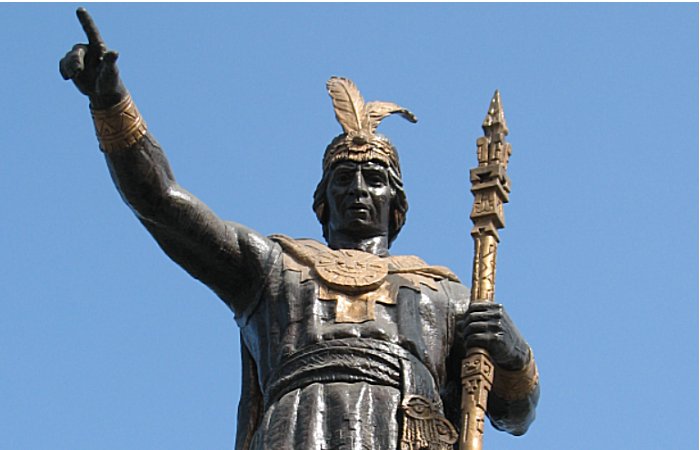Manco Capac: Legendary Founder Of The Inca Dynasty Of Peru
A. Sutherland - AncientPages.com - According to Inca mythology, the Inca are the direct descendants of a mythical first Inca, named Manco Capac, who emerged from one of the three openings in the mountain Tambotoco, near Pacaritambo (or Pacariqtambo) (‘tavern of the dawn’), located some six leagues (approximately 33 km) to the south-southwest of Cuzco, Peru.
Manco Capac came to found the Inca civilization. Even though his figure is mentioned in several chronicles, his actual existence remains unclear. While he remains a semi-mythical figure whose actual time period cannot be clearly pinpointed, he is regarded as an Inca hero and many ancient legends connect Manco Cápac to the foundation of Cuzco.
There are several versions of the origin of the Inca, which were described in a number of different Spanish chronicles.
One version of this prevalent belief of Andean people in origin places for their mythical ancestors is that of Pedro Sarmiento de Gamboa (1532–1592), a Spanish explorer, historian, author, astronomer, and scientist.
He meticulously collected first-hand oral accounts from Inca informants and produced a history (commonly titled ‘The History of the Incas’) that describes the violent conquest of the region. Written in Cuzco, just forty years after the arrival of the first Spaniards in the city, Sarmiento's The History of the Incas contains extremely detailed descriptions of Inca history and mythology
In his version of the legendary Manco Capac’s story, four men and four women, the first Inca, are said to have emerged from the central cave of Capac-toco, two other cave openings were called Sutic-toco and Maras-toco and from them emerged then other non-Inca groups.
These two cave openings were connected by a golden and silver tree that represented Manco Capac's paternal and maternal ancestors, respectively.
Statue of Manco Cápac in Plaza Manco Cápac, La Victoria district (Lima), Peru. Image credit: I, AgainErick - CC BY-SA 3.0
The Inca ancestors consisted of men named Manco Capac, Ayar Auca, Ayar Cache, and Ayar Ucho and four women called Mama Ocllo, Mama Guaco, Mama Ipacura, and Mama Raua.
Sarmiento de Gamboa wrote that these eight Inca left Tambotoco and walked to Guanacancha (or Waynakancha) where Manco Capac and his sister-wife Mama Oqllu conceived a child.
Then they walked to several other villages; in Tambo Oir (Tamboquiro), their son Sinchi Roca was born and grew up to succeed his father Manco Capac as the second king of the Inca Empire.
In Haysquisrro, seven of the Inca decided to kill their brother Ayar Cache, a great trickster who was very cruel and handy with a sling. In order to achieve this, Manco Capac sent Ayar Cache, with a helper called Tambochacay, back to Tambotoco to retrieve various items said to be left in the cave. When Ayar Cache entered the cave, he was immediately sealed in with a large boulder. Tambochacay was, however, then transformed into stone by the entombed Ayar Cache.
After the death of Ayar Cache, the seven remaining Incas left Haysquisrro and walked to the mountain of Guanacauri (or Huanacauri), where the second brother of Manco Capac was transformed into stone. It is said that Manco Capac then descended from the mountain of Huanacauri into the valley of Cuzco.
After considerable fighting, Manco Capac and his sister/wife Mama Ocllo defeated the indigenous settlers of the Cuzco Valley and established a new dynastic order in Cuzco.
The ruling elite of Cuzco at the time of the Spanish conquest was thought to be the direct descendants of Manco Capac and Mama Ocllo and thus they were considered the legitimate rulers of the Inca state.
According to the most frequently told story, the first Inca ruler Manco Capac, his sister-wife Mama Ocllo, and six siblings were sent down to the earth by the sun god Inti, to teach the people how to improve their way of life.
The sun god was very concerned that the people of earth did not live in a civilized way. He gave his children a goldenrod ('tapac-yauri'), and told them to push it into the ground wherever they stopped to rest. When they reached a spot where the rod sank completely into the ground with a single push, they should build a sacred city of the sun, to be named Cuzco.
He also instructed them to build a Temple of the Sun in honor of their father Inti.
Given the lack of a written tradition confirming this tale before the publication of ‘The Royal Commentaries of the Inca’ ('Comentarios Reales de Los Incas') by Garcilaso de la Vega in the year 1609, the authenticity of this story cannot be proven.
Still another tale says that Manco Capac deceived people into believing that he was the son of the sun god. He did this by standing on a mountain wearing silver plaques that shone in the sun and made him look like a god.
Written by A.Sutherland - AncientPages.com Staff Writer
Updated on July 26,2024
Copyright © AncientPages.com All rights reserved. This material may not be published, broadcast, rewritten or redistributed in whole or part without the express written permission of AncientPages.com
Expand for referencesReferences:
de Gamboa, Pedro Sarmiento. History of the Incas
Huber S. Państwo Inków
More From Ancient Pages
-
 Bacho Kiro Cave: Early Homo Sapiens Groups In Europe Faced Subarctic Climates
Archaeology | Sep 24, 2021
Bacho Kiro Cave: Early Homo Sapiens Groups In Europe Faced Subarctic Climates
Archaeology | Sep 24, 2021 -
 New Discovery: Unknown Use Of Yellow Colors In Ancient Egypt – Revealed
Archaeology | Oct 16, 2019
New Discovery: Unknown Use Of Yellow Colors In Ancient Egypt – Revealed
Archaeology | Oct 16, 2019 -
 Ancient Greek Goddesses Aphrodite And Artemis – Rivalry And Conflict Over Prestige Illustrated In Hippolytus By Euripides
Featured Stories | Jun 13, 2018
Ancient Greek Goddesses Aphrodite And Artemis – Rivalry And Conflict Over Prestige Illustrated In Hippolytus By Euripides
Featured Stories | Jun 13, 2018 -
 Traces Of The Watchers In Ancient China Shed New Light On This Mysterious Lost Race
Ancient Mysteries | Aug 11, 2018
Traces Of The Watchers In Ancient China Shed New Light On This Mysterious Lost Race
Ancient Mysteries | Aug 11, 2018 -
 On This Day In History: Battle of Devil’s Hole Was Fought – On Sep 14, 1763
News | Sep 14, 2016
On This Day In History: Battle of Devil’s Hole Was Fought – On Sep 14, 1763
News | Sep 14, 2016 -
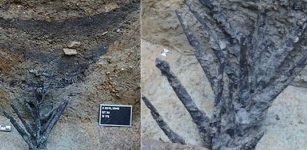 200 Tons Of Silver Hidden From The Romans On The Shores Of The River Lahn
Archaeology | Feb 23, 2023
200 Tons Of Silver Hidden From The Romans On The Shores Of The River Lahn
Archaeology | Feb 23, 2023 -
 Sir Francis Walsingham: Spymaster, Politician And Trusted Adviser To Queen Elizabeth I
Featured Stories | Nov 25, 2019
Sir Francis Walsingham: Spymaster, Politician And Trusted Adviser To Queen Elizabeth I
Featured Stories | Nov 25, 2019 -
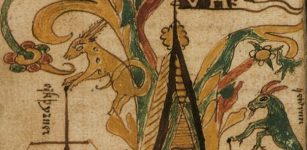 Eikthyrnir – Mythical Male Deer And Heidrun She-Goat Stand On The Top Of Valhalla
Featured Stories | Feb 11, 2019
Eikthyrnir – Mythical Male Deer And Heidrun She-Goat Stand On The Top Of Valhalla
Featured Stories | Feb 11, 2019 -
 Baffling Cathar Mystery – Was It A Double Ancient Reincarnation Case?
Featured Stories | Jan 12, 2025
Baffling Cathar Mystery – Was It A Double Ancient Reincarnation Case?
Featured Stories | Jan 12, 2025 -
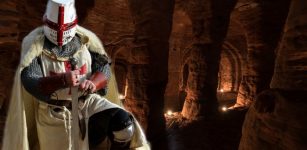 Knights Templar’s Mysterious Underground Chambers Hidden In The Caynton Caves Discovered
Archaeology | Apr 13, 2021
Knights Templar’s Mysterious Underground Chambers Hidden In The Caynton Caves Discovered
Archaeology | Apr 13, 2021 -
 Izanagi and Izanami And World Creation In Shinto Cosmology
Featured Stories | Mar 28, 2019
Izanagi and Izanami And World Creation In Shinto Cosmology
Featured Stories | Mar 28, 2019 -
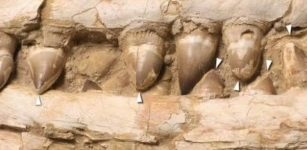 ‘Sea Monsters’ Were Real Millions Of Years Ago: New Fossils Tell About Their Rise And Fall
Featured Stories | Oct 8, 2022
‘Sea Monsters’ Were Real Millions Of Years Ago: New Fossils Tell About Their Rise And Fall
Featured Stories | Oct 8, 2022 -
 Intriguing El Tajin – Pre-Hispanic Ceremonial Site Dedicated To Totonac Rain God
Featured Stories | Jul 17, 2016
Intriguing El Tajin – Pre-Hispanic Ceremonial Site Dedicated To Totonac Rain God
Featured Stories | Jul 17, 2016 -
 Archaeologists Focus On Greek Poet Aratus’ Memorial Tomb And Ruins Of Soli Pompeiopolis
Archaeology | Aug 12, 2020
Archaeologists Focus On Greek Poet Aratus’ Memorial Tomb And Ruins Of Soli Pompeiopolis
Archaeology | Aug 12, 2020 -
 Selene – Greek Goddess Of The Moon And Myth About Love, Jealousy And Punishment
Featured Stories | Jan 24, 2019
Selene – Greek Goddess Of The Moon And Myth About Love, Jealousy And Punishment
Featured Stories | Jan 24, 2019 -
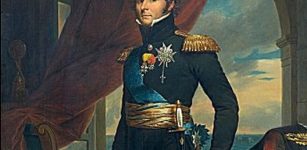 On This Day In History: Sweden Declares War On Its Ally The United Kingdom – On Nov 17, 1810
News | Nov 17, 2016
On This Day In History: Sweden Declares War On Its Ally The United Kingdom – On Nov 17, 1810
News | Nov 17, 2016 -
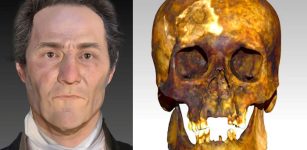 Face Of Very Old “Vampire” Buried In Connecticut Reconstructed
Archaeology | Nov 9, 2022
Face Of Very Old “Vampire” Buried In Connecticut Reconstructed
Archaeology | Nov 9, 2022 -
 What Was It Like To Be A Student In The Middle Ages?
Ancient History Facts | Jun 6, 2019
What Was It Like To Be A Student In The Middle Ages?
Ancient History Facts | Jun 6, 2019 -
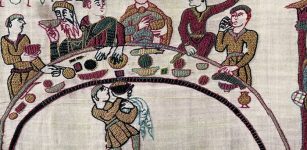 Bayeux Tapestry: Original Location Of Remarkable Romanesque Art – Finally Solved
Archaeology | Oct 26, 2019
Bayeux Tapestry: Original Location Of Remarkable Romanesque Art – Finally Solved
Archaeology | Oct 26, 2019 -
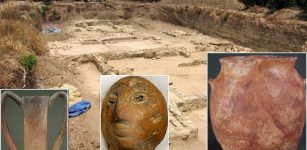 Legendary Helike – Uncovering Lost City of Poseidon
Civilizations | Dec 19, 2018
Legendary Helike – Uncovering Lost City of Poseidon
Civilizations | Dec 19, 2018


